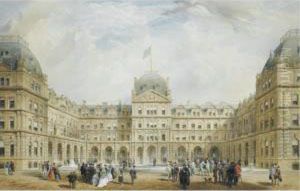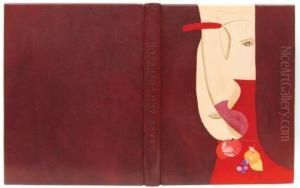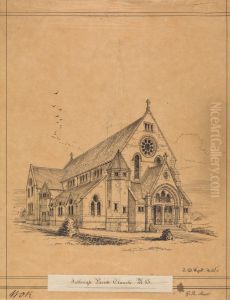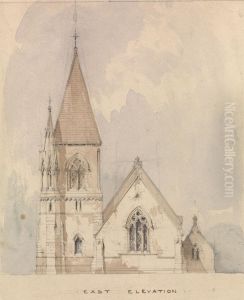Thomas Henry Wyatt Paintings
Thomas Henry Wyatt was a prominent British architect during the Victorian era, born on May 9, 1807, in Lough Glinn, County Roscommon, Ireland, to a family with a strong Anglo-Irish heritage. Educated in Reading, England, at Mr. Lyons' school, Wyatt then enrolled at the Royal Academy Schools in London to further pursue his education in architecture.
Early in his career, Wyatt worked with his cousin, the architect Philip William Wyatt, until Philip's death in 1835. During this period, Thomas Henry Wyatt gained valuable experience and established himself within the industry. After his cousin's death, he formed a partnership with David Brandon from 1838 to 1851. This partnership was responsible for designing a number of churches and country houses, primarily in the Gothic revival style which was popular during that period.
Wyatt was known for his versatility and the range of architectural styles he employed, including the Neo-Tudor and Italianate styles. His works include the design of several workhouses, which were constructed following the New Poor Law of 1834, and numerous private residences, such as the expansion and renovation of Tatton Park.
In 1860, T.H. Wyatt was elected President of the Royal Institute of British Architects and later, in 1870, he became Vice-President of the Royal Academy. He was also a member of the Royal Hibernian Academy. His contributions to architecture were recognized in 1866 when he was awarded a Royal Gold Medal for architecture by Queen Victoria.
Wyatt's architectural legacy spans a wide variety of buildings including churches, private homes, educational institutions, and workhouses. He was not only influential in shaping the architectural landscape of Victorian Britain but also mentored other architects, contributing to the development of the profession during the 19th century.
Thomas Henry Wyatt died on August 5, 1880, leaving behind a rich portfolio of architectural works that continue to be studied and appreciated for their historical and aesthetic significance.



